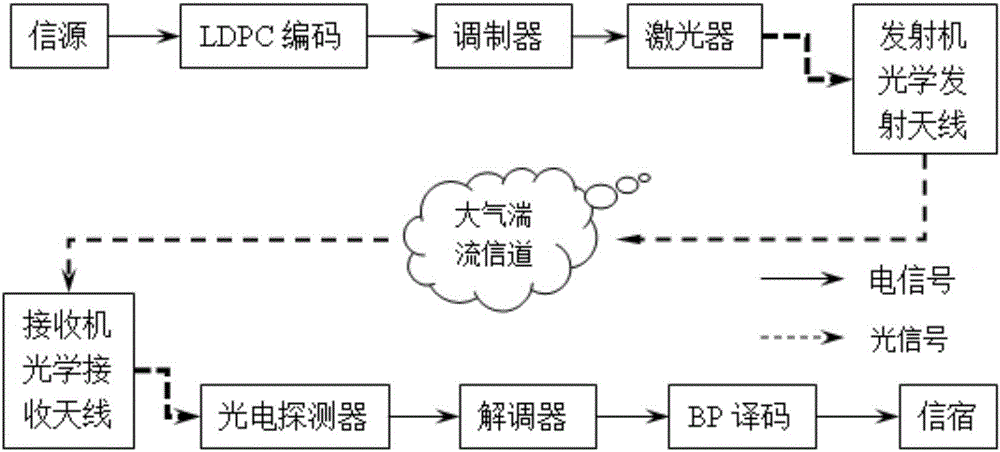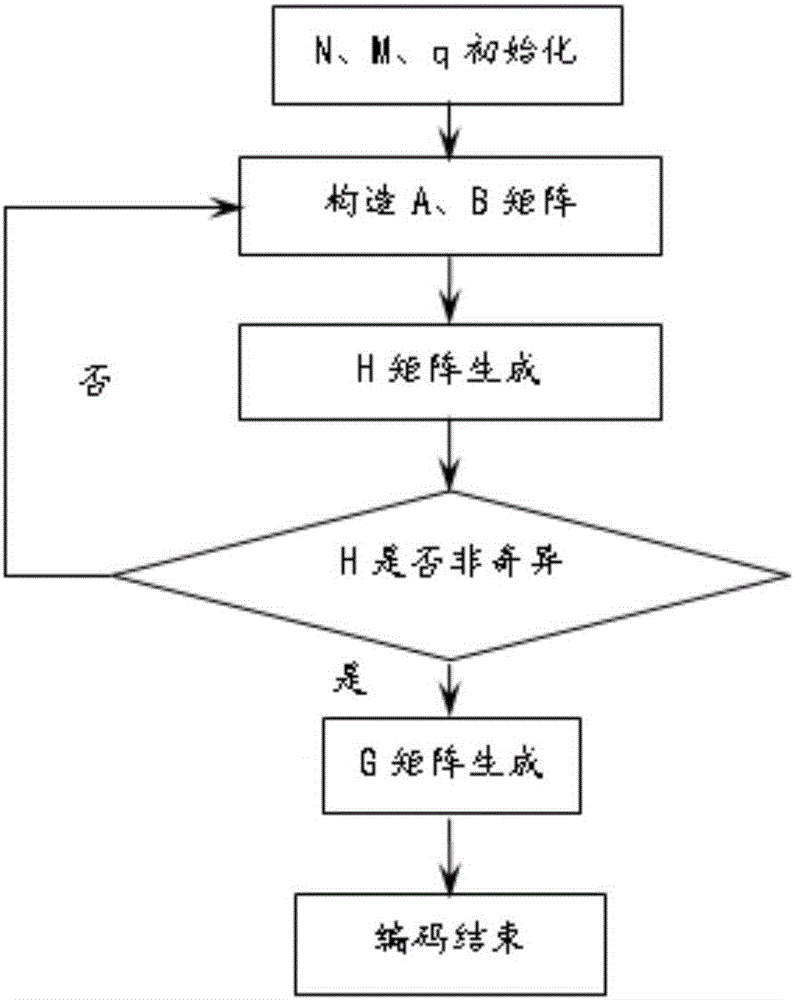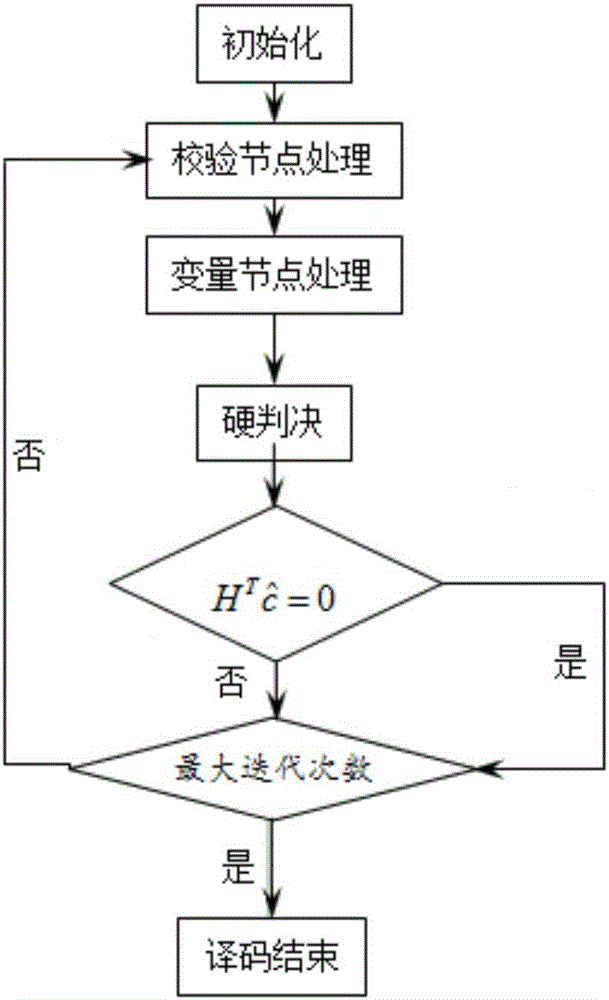Free space optical communication method and system based on LDPC code
An LDPC code and free space technology, applied in the field of optical communication, can solve problems such as low bit error rate and failure to meet system communication performance requirements
- Summary
- Abstract
- Description
- Claims
- Application Information
AI Technical Summary
Problems solved by technology
Method used
Image
Examples
Embodiment 1
[0064] Embodiment 1: In the case of weak turbulence, set the turbulence coefficient to 0.2 and 0.4 respectively, construct QC-LDPC codes with code rates of 0.5, 0.67 and 0.75, and then perform LLR-BP decoding; the specific method is as follows:
[0065] (1) Establish the data model of the received signal, and propose a channel model for different atmospheric turbulence intensities:
[0066] (1-1) Establish the data model r(t) of the received signal,
[0067] r(t)=y(t)·n 1 (t)+n 0 (t)
[0068] where t is the time, y(t) is the transmitted signal, n 1 (t) is the multiplicative noise caused by atmospheric turbulence, n 0 (t) is additive Gaussian noise including thermal noise and amplified noise, n 0 (t) mean is 0, variance is σ 2 ;
[0069] (1-2) Construct a channel model for weak turbulence intensity, and use lognormal distribution for model simulation. The probability density of light intensity V under weak turbulence conditions is Among them, σ x 2 is the logarithmic...
Embodiment 2
[0101] Example 2: Under the strong turbulence effect, when the k distribution order α is set to 1 and 4, the corresponding turbulence coefficient σ is 3 and 1.5, respectively constructing QC-LDPC codes with a code rate of 0.5 and 0.75, and then performing LLR -BP decoding; the specific method is as follows:
[0102] (1) Establish the data model of the received signal, and propose a channel model for different atmospheric turbulence intensities:
[0103] (1-1) Establish the data model r(t) of the received signal,
[0104] r(t)=y(t)·n 1 (t)+n 0 (t)
[0105] where t is the time, y(t) is the transmitted signal, n 1 (t) is the multiplicative noise caused by atmospheric turbulence, n 0 (t) is additive Gaussian noise including thermal noise and amplified noise, n 0 (t) mean is 0, variance is σ 2 ;
[0106] (1-2) Construct a channel model for strong turbulence intensity, and use K distribution for model simulation. The distribution function of light intensity V under the effec...
PUM
 Login to View More
Login to View More Abstract
Description
Claims
Application Information
 Login to View More
Login to View More - R&D
- Intellectual Property
- Life Sciences
- Materials
- Tech Scout
- Unparalleled Data Quality
- Higher Quality Content
- 60% Fewer Hallucinations
Browse by: Latest US Patents, China's latest patents, Technical Efficacy Thesaurus, Application Domain, Technology Topic, Popular Technical Reports.
© 2025 PatSnap. All rights reserved.Legal|Privacy policy|Modern Slavery Act Transparency Statement|Sitemap|About US| Contact US: help@patsnap.com



